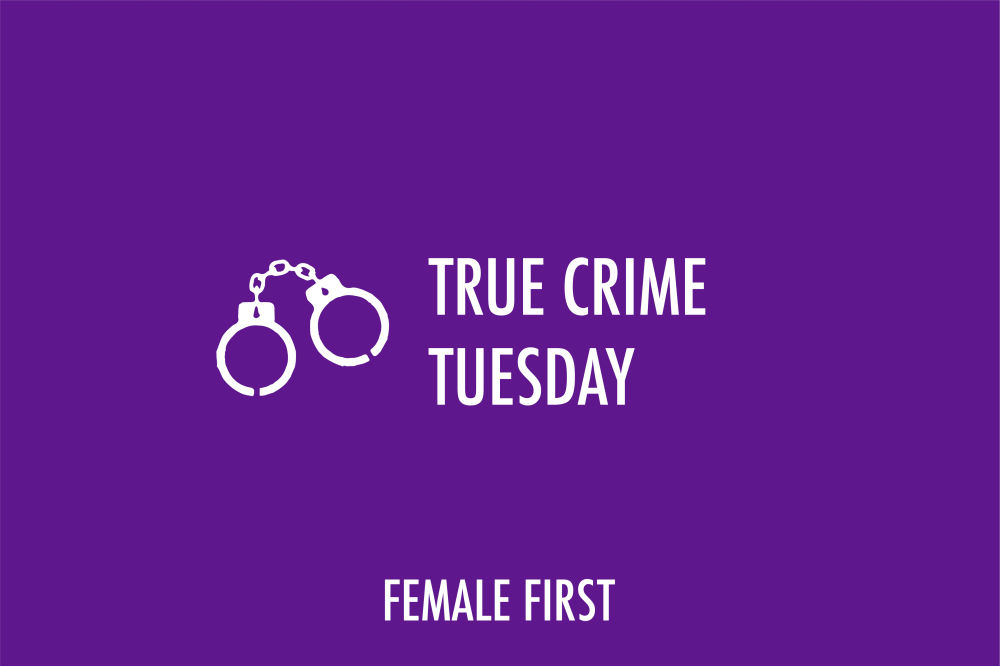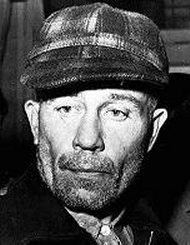NOTE: Our True Crime Tuesday series will highlight the stories of serial killers and other criminals, with potentially triggering and offensive detail discussed. Proceed with caution.
This is the case of Ed Gein, also known as The Butcher of Plainfield. Welcome back to True Crime Tuesday.

An introduction to the case
Ed Gein, also known as The Butcher of Plainfield or the Plainfield Ghoul, was an American killer and body snatcher, who committed his crimes around his hometown of Plainfield, Wisconsin. His case in particular gained notoriety because of how he had fashioned trophies and keepsakes from the bones and skin of the bodies he exhumed.
Here, we take a look at the start of his criminality, and how authorities eventually caught up with the cold-blooded killer.
Where it all began
Some believe that Ed Gein started his killing spree with his own brother, Henry. Reporting his sibling missing on a day in which the pair were burning away marsh vegetation at their family property, Ed is suspected of knocking Henry out cold before allowing the fire they'd built together to get out of control. This was never proven however, and the authorities at the time accepted that it was an accident, with the county coroner listing asphyxiation as the cause of death.
On December 29th, 1945, shortly after the death of Gein's brother Henry, his mother Augusta passed away after suffering a second stroke. Author Harold Schechter says that this devastated Ed, as he had "lost his only friend and one true love. And he was absolutely alone in the world." https://books.google.com/books?id=2AZePgAACAAJ
The moment authorities closed in
12 years later, on the morning of November 16th, 1957, Bernice Worden disappeared. A resident reported that the truck from the hardware store she owned had been driven out of the rear of the building at 9.30am, but it wasn't until 5pm that Worden's son, Deputy Sheriff Frank Worden, entered the store and discovered blood stains on the floor. The cash register had also been left open. It would be this murder that would prove to be Gein's undoing, and reveal all that he had done in the years prior.
Frank Worden told fellow investigators that Gein had been in the store the evening before his mother's disappearance, and that he returned the next morning for a gallon of antifreeze. As a sales slip for that very item was the final receipt written on the morning Worden disappeared, officers decided they had enough evidence to arrest Gein.
Gaining a warrant for the Gein farm, it didn't take long for investigators to discover they had the right man. A Waushara County Sheriff's deputy found Worden's decapitated body in a shed, hung upside down by her legs. She'd been shot and killed, before being mutilated following her death.
A number of body parts, and household items fashioned with the skin of exhumed bodies, were also found on the property. Here's just some of what authorities came across:
- Chair seats covered in human skin
- Bowls made from human skulls
- A corset made from a female torso skinned from shoulders to waist
- Leggings made from human leg skin
- Masks made from the skin of female heads
- A belt made from female human nipples
- A pair of lips on a window shade drawstring
- A lampshade made from the skin of a human face

Gein's trial and eventual death
During questioning, Gein admitted to making up to 40 visits to local graveyards, where he would exhume recently-buried bodies in what he described as a "daze-like" state. He said at around 30 of those occasions, he came out of the daze whilst still at the cemetery, returning home without anything. During the other times however, he dug up the bodies of middle-aged women he thought resembled his mother, taking their bodies home before tanning their skins to create household objects.
Gein admitted to stealing from nine graves, working with investigators by leading them to their locations. He denied having sex with the exhumed bodies, but did admit that some of the body parts he used were taken from a tavern owner called Mary Hogan, who had been missing since 1954. He said that he shot her dead, but later denied any memory surrounding the details of her death.
Though he was also considered a suspect in several other unsolved Wisconsin cases, nothing could be confirmed.
The initial case against Gein almost fell apart completely, as it was reported Waushara County Sheriff Art Schley assaulted the killer, by banging his head and face into a wall. As a result of this, Gein's first confession was ruled inadmissible in court. Fortunately, there was enough other evidence to bring Gein to trial, but again, complications arose.
Gein was arraigned on November 21st, 1957, on a single count of first degree murder in Waushara County Court. There, he pled not guilty by reason of insanity. He was then diagnosed with schizophrenia and found mentally incompetent, before being declared unfit for trial.
Still, Gein was detained at a maximum-security facility in Waupun, Wisconsin for the criminally insane, before being transferred to the Mendota State Hospital in Madison.
It took 11 years for Gein to see his day in court, but in 1968, doctors determined he was able to "confer with counsel and participate in his defense". His trial started on November 7th, 1968, lasting just a week. It was held without a jury, at the request of the defense, with Judge Robert H. Gollmar presiding.
During the trial, a psychiatrist testified that Gein had told him he didn't know whether his killing of Worden was intentional or accidental. He told the psychiatrist that he examined a gun in Worden's store, before the gun went off and killed the shop owner. This was all he claimed to remember from the morning.
On November 14th, 1968, Gein was found guilty by Judge Gollmar. A second trial dealt with his sanity, with the judge coming to the conclusion that he was "not guilty by reason of insanity", before ordering his committal to Central State Hospital for the Criminally Insane. He spent the rest of his life in a mental facility.
Gein died on July 26th, 1984, aged 77, at the Mendota Mental Health Institute. The cause of death was listed as respiratory failure secondary to lung cancer.
In the years since his death, Gein's grave has been vandalised, with the stone chipped away for souvenir seekers. The stone was even stolen at one point, but was eventually recovered.
In popular culture
Though men like Gein should be left to rot in the ground, he has become the subject of a number of different documentaries and the like, even serving as the inspiration for Psycho lead character, Norman Bates.
One project that would have gone too far was eventually aborted, with American filmmaker Errol Morris and German director Werner Herzog hoping to collaborate on a film, where they would even secretly exhume Gein's mother from her own grave.
Whether we like it or not, Gein will go down in history as one of America's most vile and prolific killers and psychopaths.
MORE: The Fred and Rose West Tapes
Tagged in True Crime

